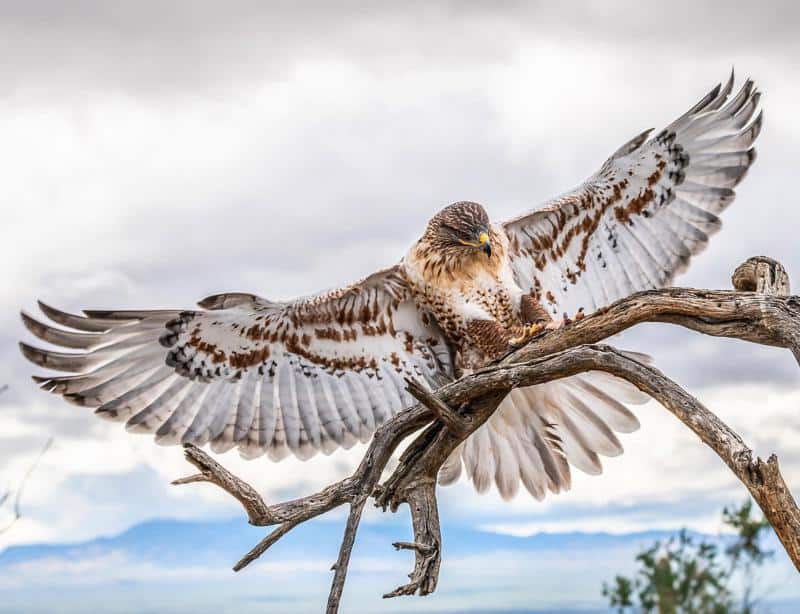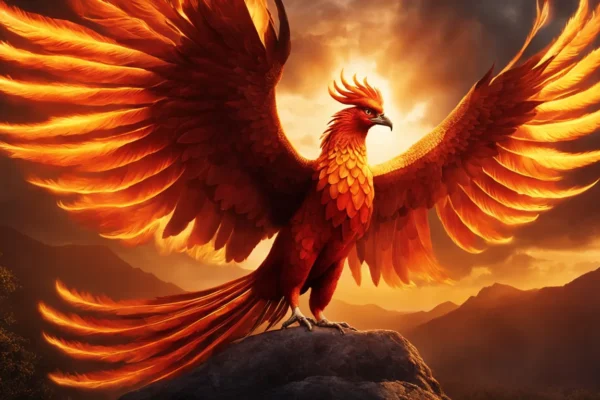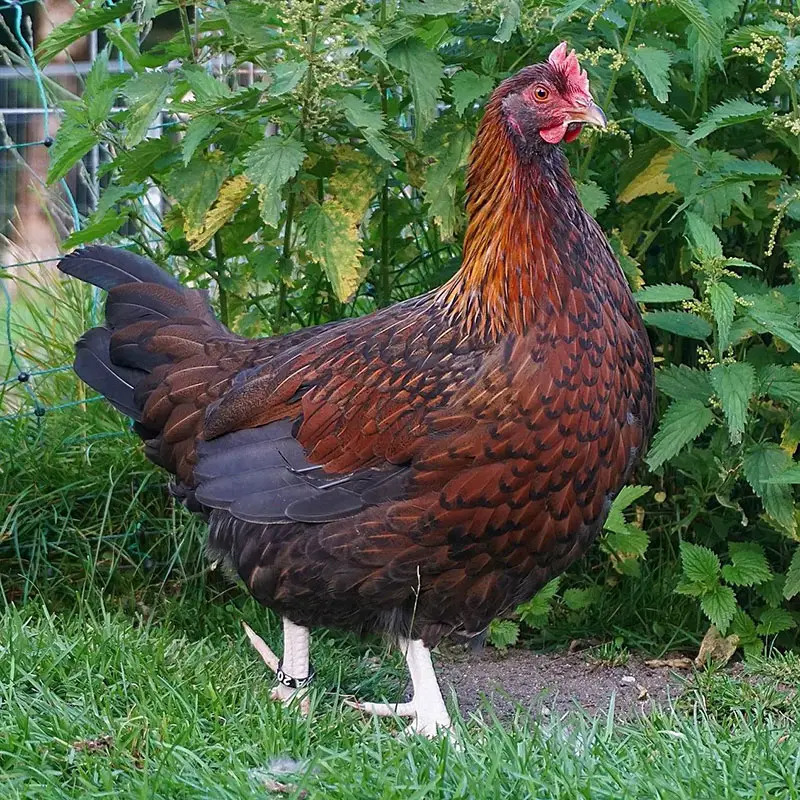We have to accept that falcons, hawks, and eagles are quite similar predatory birds. That does not, however, imply that you may group them all together! They belong to the raptor group of birds and are all proud, strong animals. They vary significantly, which is something you should be aware of.
This article will assist you in identifying a hawk, falcon, and eagle and then compare all of its salient characteristics. Who would prevail in a duel? At the end, we’ll let you make up your mind.
Identification of Eagles

Out of the three birds we are comparing, the eagle is the largest. They have big heads and flashing eyes, and they seem to be robust, muscular beings. Among the most popular species are the golden and bald eagles.
The most important factor in determining a bird’s identity as an eagle or any raptor is its size. An eagle’s size allows it to hunt bigger animals including groundhogs, raccoons, and rabbits. Certain eagle species have also been known to take down bigger animals, such deer.
You must first do study on the eagle species that are present in your area in order to determine the type of eagle you are seeing.
Falcon Identification

Although certain tiny hawk species are readily mistaken with falcons based merely on appearance, falcons are the smallest of the three bird species. The wings of falcons are usually thinner and more slender. They are quite nimble and have quick direction changes while flying. If a medium-sized bird of prey is confused for a hawk, it’s advisable to check for its unique wing form and flying agility. Falcons have pointed wings that are quite thin.
The smallest species of falcons are kestrels, which are followed in size by hobbies, and peregrine falcons, which are the biggest.
Hawks Identification:

Typically, hawks are medium-sized predatory birds. On the other hand, hawk species differ significantly in terms of size and pattern.
Hawks generally fall into two categories. Accipitrine hawks, another name for true hawks, are long and slender in build. When they’re flying, their short, sharp wing motions could help you identify them. These hawk species are mostly found in woodland or wooded regions.
Actually, the second kind of hawk is not a hawk at all. Though they go by different names in other places (such as the UK), buteonine hawks are referred to as buzzards in the UK. They have wider bodies and sporadic wing motions, and they are more often encountered in open spaces.
Hawk, Falcon, and Eagle Comparison
We’ll now go over the essential features and characteristics of each bird, side-by-side comparisons.
Species

Eagle: 60
Hawk: 200+
Hawk: 40
To add to the confusion, there are species of hawk that belong to all three categories of birds of prey that are closely related and aren’t typically named hawks.
There are around 40 species of falcons, more than 200 species of hawks, and slightly over 60 species of eagles. Nonetheless, some sources claim that there are more than 250 different species of hawks, while others place the number closer to 210.
The Accipitridae family includes hawks, buzzards, kites, harriers, and eagles, which is why they are sometimes mistaken. Moreover, any bird of prey may be referred to as a “hawk” in casual speech.
Looks

Important ID characteristics:
Eagle: massive, powerful, well-built
Falcon: compact, sharp, and thin
Hawk: wide, medium
Given their size and more distinct head shape compared to falcons and hawks, eagles are the simplest birds in the sky to identify by sight. They seem almost more muscular now!
There are fewer kinds of falcons, and the majority of them are typically short and thin with pointed wings for increased agility.
The hardest species to distinguish based only on appearance are hawks. Between species, there are significant differences in their colors and patterns. Buzzards have longer tails and wider bodies than members of the true hawk family, which tend to have longer tails.
Vocalization
Eagle: yelling
Falcon: bellows and screams
Hawk: raspy cries
A bald eagle can be heard screaming in this video as it passes another bird. It’s not what you may expect to hear, a “caw.” When a giant bird circles above in TV dramatizations or programs, the same distant caw sound is employed, although that’s not true at all.
A falcon’s call is more of a high-pitched scream than an extended screeching sound. Occasionally, it may seem as if the bird is whistling.
Lastly, hawks vocalize like a harsh screech. as if they are experiencing sore throats.
Naturally, the birds won’t be noisy all the time, so you may not always be able to recognize them by their sound.
Height

Falcon: 20cm – 65cm
Eagle: 45cm – 107cm
Hawk: 20–69 cm
We define height as a bird’s length, often known as bill-to-tail length. When the bird lays flat on its back, this is measured from the tip of its tail to the tip of its beak. However, because to its high error rate, this measurement is seldom utilized for scientific research and comparisons. It’s important to remember that a bird’s size is determined by its age and gender as well as its species.
To help you get a sense of the variety, we have determined the average lengths of the biggest and smallest birds of each species.
45 cm is the smallest eagle, the Australian tiny eagle.
At 107 cm, the Harpy eagle is the largest eagle (just short of the Steller’s sea eagle, which is 105 cm).
20cm Pygmy falcons are the smallest falcons.
The largest falcon, the 65-cm Gyrfalcon,
The smallest hawk is a 20 centimeter little hawk.
Ferruginous hawks, the largest, measure 69 cm.
Weight

Eagle: weighing between 815 and 6250 grams
Falcon weighing between 85 and 1752 grams
Hawk: weighing between 75 and 2268 grams
Similar to length, weight varies according on the type of bird. Many of these bird species also exhibit sexual dimorphisms in size, wherein the female is usually noticeably bigger than the male. In situations when coloration and patterning are insufficient indicators, weight and size may be a reliable means of identifying the gender of a bird of prey.
These are the mean values:
Australian tiny eagle, the smallest eagle, weighs 815g.
Steller’s sea eagle, the largest eagle, weighs 6250g.
The smallest falcon, the 85g Pygmy falcon
Biggest falcon, Gyrfalcon, weighing 1752 g
The smallest hawk is a 75g little hawk.
Largest hawk: 2268g ferruginous hawk
Wingspan

Eagle: 120 cm – 2.2 m
Falcon range: 112–160 cm
Hawk: 40–152 cm
When the wings are held extended, the distance between the tips of each wing is the measurement of the wingspan. It varies from person to person and from species to species, much like weight and length. It’s not often used by itself to estimate the size of birds; when combined, the wingspan, weight, and length provide the most accurate indication.
The smallest eagle is the 120-cm Australian tiny eagle.
Largest eagle: 2.2 m Steller’s sea eagle
The smallest falcon is the 112 centimeter Pygmy falcon.
Largest falcon: 160 cm-long Gyrfalcon
The smallest hawk is a 40 centimeter little hawk.
The largest hawk is the 152-cm ferruginous hawk.
Lifespan
20 years for Eagle, 13 years for Falcon
Hawk: 20 years
It is difficult to estimate the lifetime of wild birds since some are either very uncommon or almost ever tagged! However, our understanding of longevity is partly based on the fact that these birds were kept in captivity. For wild birds, this is untrue since they may live longer in captivity when given committed human care.
Each of the bird families’ averages in the wild are shown in the figures above. However, there are certain exceptions, and as more study is done, we naturally anticipate this findings to alter.
While some eagles are said to live far longer than others, this may not be the case. Few birds survive to be 70 years old, according to Matthew Igleski, a Master of Science and Conservation Biology student at the University of Michigan. The oldest bird he is aware of is a golden eagle that survived for 46 years in captivity.
Diet
Eagle: Fish, snakes, and small animals
Falcon: Rabbits and small rodents
Hawk: Mice and small birds
Since all three species are carnivores, there is often considerable overlap in the nutritional components of their diets.
Although certain eagle species may scavenge, most eagles pursue their prey. Eagles typically hunt medium-sized rodents, such as fish, snakes, and rabbits, while some are able to take on bigger prey.
Although some bigger species may take down a rabbit, falcons prefer to hunt smaller prey like mice and bats. It is dependent upon the kind of rodents that are present in the particular kind of falcon’s environment.
Hawks consume rodents and other small birds, such as sparrows. Insects could be consumed by a few of the smaller species.
Population
We define populous as the size of the population. There are no general statistics since there are so many distinct species of hawk, falcon, and eagle. It would be like attempting to tally the number of fish in the ocean.
Populations might differ greatly because some species are more uncommon than others.
With just 400 to 500 pairs remaining in the wild, the Philippines eagle is among the rarest in the world and is considered critically endangered. Nonetheless, a few eagle populations have made a complete recovery. Although it was listed as endangered in 1995, the American bald eagle is now considered a species of least concern. There are reportedly so many breeding pairs that yearly inspections are no longer required.
Habitat
Eagle: All across the world, bar Antarctica
Falcon: All across the world, bar Antarctica
Hawk: All throughout the world bar Antarctica
Eagles, falcons, and hawks all have equal access to their environment. Antarctica is the only region on Earth where these birds cannot survive.
Nevertheless, some animals are more content in certain environments than others. For instance, the Gray Hawk favors wide areas and the margins of woods. It is found in the southern US states and northern Costa Rica. Some hawk species, such as the Sharp-shinned hawk, prefer to live in densely forested regions in the northern United States and Canada. A place close to open bodies of water is preferred by Bald Eagles.
Mountainous or plains terrain, most birds need access to large, unoccupied expanses. But “urban raptors” are real, and you may be able to see several in your town!
Region
Every animal has a unique geographical range that it uses for hunting and living. While some species may only have one or two birds per area, others want to be near others. Birds may have quite large territorial ranges.
It is difficult to get average statistics on the territories of hawks, falcons, and eagles. You could be more successful if you’re looking for the territorial range of a single bird species in your area.
We are aware that some species are resident while others are migratory. For instance, bald eagles may migrate if they build their nests in northern regions where their winter water supply freezes up. In the south, where there are year-round water supplies, bald eagles are content to live there permanently.
Flying Speed
Eagle: 150 mph
Falcon: 250 mph or more
Hawk: 120 mph or more
You are thinking about diving speeds instead of flying speeds if you were anticipating some very amazing speeds! When a bird dives to attack prey, its diving speed is very quick, while its forward speed when using its wings is rather slow.
One of the fastest eagle diving speeds is 150 mph, achieved by the golden eagle.
But much quicker are falcons. The Peregrine falcon is the fastest bird in the world and the fastest animal in the whole animal kingdom, with a dive speed of nearly 200 mph!
Lastly, it’s not often recognized that hawks can move quite quickly. Together with eagles and a few other bird species, falcons top the list of the fastest birds in the world. However, when they dive, hawks may travel at rather high speeds.
The Red-tailed hawk is the fastest hawk, with dives reaching up to 120 mph.
Nesting
Eagle: elongated and cup-shaped
Falcon: minimalist and low-maintenance
Hawk: substantial and enduring
Both hawks and eagles construct spacious, cozy nests that they want to occupy for as long as possible. The birds will return to the nest each year as long as it is intact.
An eagle’s cup-shaped nest is lined with moss or another softer material and constructed from sticks. An additional nest is added each year.
A mature tree’s tallest limb is where hawks construct their lifelong nests, which they fiercely protect from both people and other hawks.
The Falcons, however, defy the norm. They usually make the least amount of effort possible, using just a little patch of ground or a few scattered sticks. Falcons often build their nesting locations on outcrops and cliff faces.
Eggs
Egg production annually:
Eagle: 1-3
Falcon: 2–5.
Hawk: 1–5.
The eagle lays one to three eggs year, and it takes the eggs 35 days to hatch, which is slightly over a month. The majority of shell species have a white appearance, although some can contain brown specks. Of course, you’re not going to see any in the wild until you go to very high altitudes!
Usually laying two to five eggs at a time, the brown splotches on the white eggs are darker than those on eagle eggs. The eggs hatch after 30 days of incubation.
Once the eggs hatch, both hawk couples tend to them. Each female lays one to five bluish-white eggs annually on average.
Due to their diurnal nature, all of these birds are active during the day and spend the night in their nest.
Mating
Eagle: Lifelong partner
Falcon: Lifelong partner
Hawk: Species-specific
Eagles don’t usually fly in large flocks since they are solitary birds. They stay in the same nest year after year and are monogamous, lasting a lifetime together. Still, the majority of eagle sightings are of solitary birds.
Falcons mate for life and are monogamous. Despite not having reusable permanent nests, they come back to the same area every year to mate.
There are heterogamous hawk species and monogamous hawk species. Hawks do a synchronized, circular dance in midair to create a couple. Hawks also congregate in a “kettle,” which, depending on the species, may number thousands of birds.
Who Will Win in a Fight: Eagle, Falcon, or Hawk?
We have one succinct and conclusive response for you: the eagle! Any falcon or hawk species would be completely subjugated by the greatest type of eagle. Given its speed and agility, the peregrine falcon had the greatest chance of avoiding an assault; yet, most species would perish extremely rapidly in the event that an eagle decided to launch an attack.



![13 birds with mud nests [With Images]](https://birdsology.com/wp-content/uploads/2022/09/25-600x400.jpg)


![What Is Inside A Penguin’s Mouth? [Detailed Guide]](https://birdsology.com/wp-content/uploads/2023/08/Rockhopper2.jpg)
